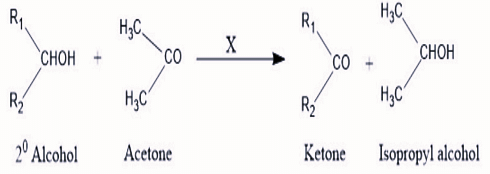Addition of HBr to 1.3-butadiene at 40°C yields:
- 80% 1,2-addition product and 20% 1,4-addition product
- 80% 1,2-addition product and 20% 1,3-addition product
- 80% 1,4-addition product and 20% 1,2-addition product
- 80% 1,2-addition product and 20% 1,3-addition product
The Correct Option is C
Solution and Explanation
To understand the addition of HBr to 1,3-butadiene at 40°C, we need to consider the concept of kinetic and thermodynamic control in organic reactions. 1,3-butadiene is a conjugated diene, meaning it has alternating single and double bonds, which allows for two possible modes of addition with HBr: 1,2-addition and 1,4-addition.
- 1,2-Addition Product:
- In 1,2-addition, HBr adds across the first double bond of the butadiene.
- Hydrogen (H2) attaches to the first carbon, and bromine (Br) attaches to the second carbon.
- This reaction is kinetically controlled at lower temperatures because it proceeds fastest and forms initially.
- 1,4-Addition Product:
- In 1,4-addition, HBr adds across the conjugated system.
- Hydrogen attaches to the first carbon, and bromine attaches to the fourth carbon after rearrangement of the double bonds.
- This product is more stable and favored at higher temperatures due to thermodynamic control because it leads to a more substituted, stable alkene.
At 40°C, the reaction is under thermodynamic control, which means the 1,4-addition product is predominant. Thus, 80% 1,4-addition product and 20% 1,2-addition product is formed as the major and minor products respectively.
This is because the 1,4-addition product is more stable and energetically favored at higher temperatures like 40°C, whereas the 1,2-addition is a kinetically controlled product that forms rapidly but is less stable.
Therefore, the correct answer is: 80% 1,4-addition product and 20% 1,2-addition product.
Top Questions on carbonyl compounds
- Which of the following are neutral?
- KEAM - 2025
- Chemistry
- carbonyl compounds
- Acetone can be converted to 2-methylpropan-2-ol using:
- KEAM - 2025
- Chemistry
- carbonyl compounds
- The correct stability order of carbocations is
- JEE Main - 2024
- Chemistry
- carbonyl compounds
- According to Oppenauer Oxidation reaction, oxidation of secondary alcohol to ketone by reagent (X) in acetone takes place, what is "X" :

- GPAT - 2024
- Organic Chemistry
- carbonyl compounds
- The Gattermann-Koch reaction is used in the industrial preparation of benzaldehyde. The electrophile involved in this reaction is
- CUET (UG) - 2024
- Chemistry
- carbonyl compounds
Questions Asked in GPAT exam
- Which of the following alkaloids are found as salts of meconic acid?
- GPAT - 2025
- Introductory Pharmacognosy
Choose the correct match of laxative and its Mechanism of Action (MOA):

- GPAT - 2025
- Laxative
Match the following:
(P) Schedule H
(Q) Schedule G
(R) Schedule P
(S) Schedule F2
Descriptions:
(I) Life period of drugs
(II) Drugs used under RMP
(III) List of Prescription Drugs
(IV) Standards for surgical dressing
- GPAT - 2025
- Drug therapy
- Which of the following is used to evaluate disinfectant?
- GPAT - 2025
- Pathogens
Match the following:
(P) Tuberculosis (1) Bacterial
(Q) Diphtheria (2) Viral
(R) Yellow fever (3) Toxoids
(S) Malaria (4) Protozoal- GPAT - 2025
- Pathogens